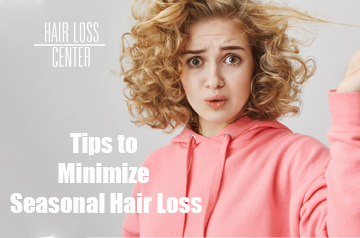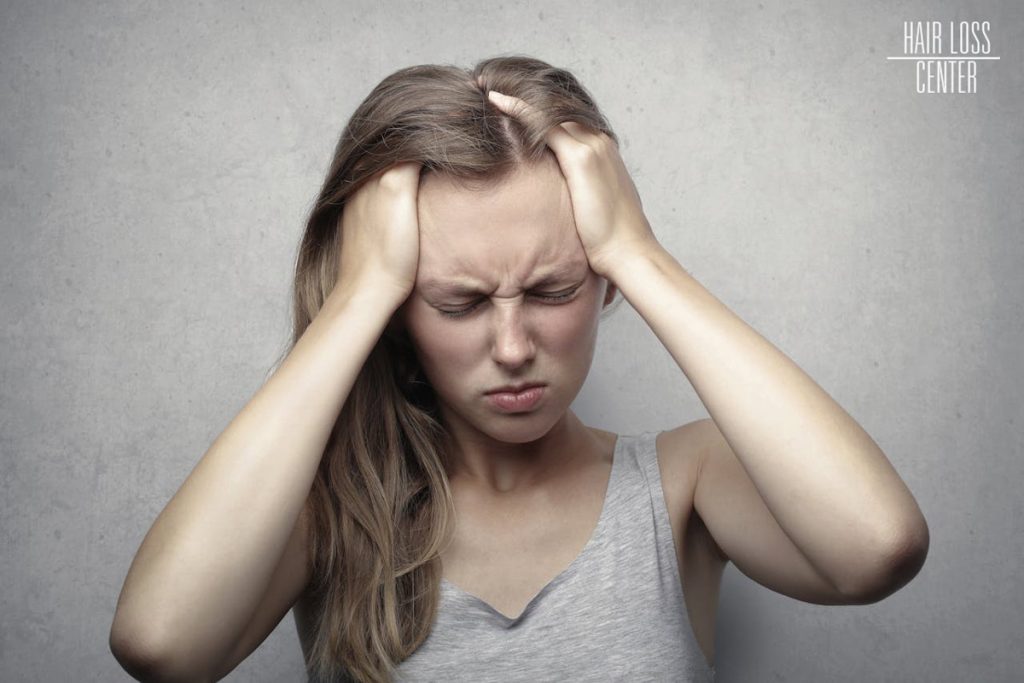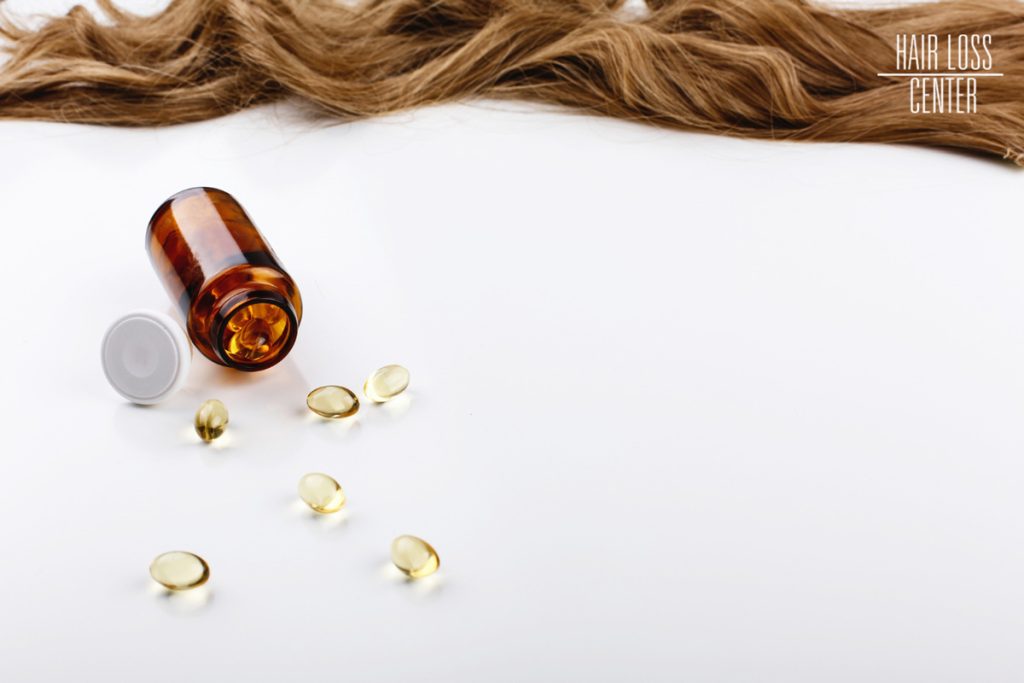

Tips to Minimize Seasonal Hair Loss
Many people think seasonal hair loss is only a myth. But bad news, it actually happens. And, you’d better learn a few things to reduce the amount of hair shedding during the transition between two seasons.
So, in this article, we’ll first talk about why seasonal hair loss happens, then we’ll give you some tips to help you minimize this kind of temporary hair loss with some home remedies and hair care routines. Finally, we’ll answer some of your common questions about temporary hair shedding.
Suffering from hair loss? No matter what’s the cause, you may find our hair loss centers in Southern California helpful.
Contact Newport Hair Loss Center in LA, Orange, and San Diego for a beautiful natural wig or special hair care products.
What Is Seasonal Hair Loss?
You may have noticed that during specific times of the year, your hair sheds more than usual. This increased hair shedding happens when the season is changing.
The most common time is during the late summer and early fall months; however, it can happen in spring as well.
This phenomenon is known as seasonal hair loss, but it’s sometimes referred to as seasonal shedding or seasonal alopecia.
Before we go on, it’s worth mentioning that many scientific studies have assessed and proved the seasonality of hair loss, for example, Seasonal Hair Loss, 2010. It seems that humans, like many other mammals, such as sheep and hamsters, go through seasonal shedding, but it’s much less obvious in us.
Four Causes of Seasonal Hair Shedding
Multiple factors can contribute to seasonal hair loss.
1. Hair Growth Cycle
The natural hair growth cycle consists of three phases:
- Anagen: This is the growth phase during which new hair strands are produced and they grow about half an inch per month.
- Catagen: This is the transitional stage during which hair growth slows down. Normally, about 3% of our follicles are in this phase at any given time.
- Telogen: This is the resting phase (or shedding phase) during which the hair follicle becomes inactive (dormant). So, the hair strand doesn’t grow and by the end of this phase, it naturally sheds. Typically, 10% to 15% of our hair follicles are in this stage at any given time.
Now, studies suggest that seasonal changes (such as environmental factors discussed below) affect the synchronization of these phases.
This means that towards the end of summer and early fall, a higher percentage of our hair follicles enter the telogen phase (shedding phase) at the same time, leading to increased hair shedding.
2. Environmental Factors
A new season brings about changes in weather conditions, like lower temperatures and reduced humidity in fall compared to summer.
In addition, our hair and scalp are exposed to sunlight during the summer months which can cause hair damage.
All this means that our hair and scalp become drier and weaker by the end of summer, and as a result, we experience more hair shedding.
3. Hormonal Fluctuations
Long summer days influence melatonin levels as it’s produced during the night. So, in summer, less melatonin is produced.
This hormone regulates hair growth, protects follicles from oxidative stress (which causes hair loss), and stimulates the production of melanin in hair follicles.
So, this hormonal fluctuation may lead to more hair loss in the late summer and early fall weeks.
4. Stress and Depression

Stress is one of the main causes of hair loss in general (read our article about Stress-Related Hair Loss), and as we get closer to the beginning of fall, stress levels increase in many people.
One reason can be returning to school and college for students, parents, and teachers. Another cause for this increased stress can be Seasonal Affective Disorder (SAD) and its milder form, winter blues.
Colder and shorter days in fall and winter affect people’s moods. Around 0.5% to 3% of the general population suffer from SAD, which is a seasonal depression. However, 10% to 20% of people experience a milder seasonal mood change (winter blues or subsyndromal SAD).
This kind of depression can cause
- anxiety and stress,
- hormonal changes,
- loss of appetite (which leads to poor nutrition),
- and a lack of motivation for hair care.
All these lead to an increase in hair loss.
Overall, it’s important to remember that seasonal hair loss is a natural process that most people experience due to changes in the environment and physiological factors. So, there’s no need for concern and get more stressed about it! However, this doesn’t mean that we shouldn’t try our best to minimize its effects.
Which Groups of People Are More Affected by Seasonal Hair Loss?
Although seasonal hair loss is very common, it doesn’t affect all of us to the same extent. Some people may hardly notice it, while others may experience it a couple of times every year. This depends on a few factors. Here are the most important ones.
Genetics and Seasonal Hair Loss
Genetics is not only important in our hair growth or hair thinning patterns, it also determines to what extent seasonal changes may cause us to lose hair.
People
- with a family history of androgenetic alopecia,
- who have more sensitive follicles to male hormones,
- with naturally shorter anagen phase in their hair growth cycle,
- whose regulatory genes (specific genes responsible for regulating the hair growth cycle) make their body more sensitive to environmental and physiological changes,
are more likely to experience seasonal hair loss than others.
Our Lifestyle and Overall Health
Our lifestyle affects our hair and scalp health a lot. People who
- experience a lot of stress,
- don’t sleep well,
- don’t follow a suitable hair care routine,
- aren’t getting the necessary nutrients for hair growth,
have weaker hair, which makes them experience seasonal hair shedding more than others.
Besides, our overall health contributes to having healthy hair and scalp. For example, hormonal imbalance, iron deficiency, and many other underlying health issues can lead to more hair shedding during seasonal hair loss.
Environmental Conditions and Seasonal Shedding
As discussed above, environmental factors trigger seasonal hair loss. So, the climate of the place you live in also matters in how much you experience hair shedding in fall and winter (even during spring for some people).
So, people in regions with distinct seasonal changes may experience seasonal shedding more than people in other areas.
To sum up, different groups of people experience seasonal hair loss differently, depending on their genetic disposition, environment, lifestyle, and health condition. This means a high percentage of people notice a significant increase in hair loss during specific times of the year. So, learning a few effective strategies to deal with this natural phenomenon is essential for most of us.
How to Stop Seasonal Hair Loss
There are a few simple things we can do to minimize or even prevent seasonal hair shedding. Just follow the tips below.
Hair Care for Seasonal Changes
- Keep your hair and scalp hydrated by applying a hydrating conditioner to avoid breakage and damage.
- Only use gentle hair care products, like sulfate-free shampoos that don’t remove all the natural oil (sebum) from your hair and scalp.
- Limit the use of heat-styling tools, like dryers, straighteners, etc.
- Before heat styling, you can use a heat-protectant spray to minimize the damage.
- Avoid pulling your hair with tight hairstyles, like ponytails and braids.
- Make sure the water you’re showering with isn’t hard water. If it is, use filtered water to avoid hair and scalp damage.
- It’s necessary to remove the split ends and damage by trimming your hair regularly.
- Consider massaging your scalp to increase blood circulation in that area. This can stimulate hair growth.
- Never forget that healthy hair needs a healthy scalp. Use argan or coconut oils to nourish it.
Seasonal Hair Fall Diet and Supplements

- Make sure your diet contains all the essential nutrients for healthy hair and hair growth, including vitamins (B-complex, A, C, D, and E), minerals (iron and zinc), and fatty acids (omega-3).
- Keep your body hydrated during summer days by drinking pure water.
- Taking some supplements, like biotin and keratin, is a good idea but before taking them, consult with a specialist.
Protect Your Hair from Environmental Factors
- Although summer nights are short, you should get enough sleep during the night.
- During hot days, avoid direct and prolonged sunlight exposure. You can wear a hat, or a scarf, or apply hair care products with UV protection.
- During summer, we tend to shower more often, however, you should avoid over-washing your hair to avoid dry and fragile hair. Two to three times a week is enough.
- After swimming, make sure you thoroughly wash your hair with pure water.
- Manage your stress and depression by exercising, relaxing, or seeking professional help if necessary.
If you still notice too much hair shedding during transitions between seasons, it’s a good idea to get help from a dermatologist.
Did you know we offer a free 30-minute consultation session with our wig experts? Call now to schedule an appointment.
FAQs About Seasonal Hair Loss
Here are a few of the questions we get about seasonal shedding.
How Can We Tell If It Is Seasonal Hair Shedding or Something More Serious?
Seasonal hair shedding is very much like other kinds of hair loss. So, it’s a bit challenging to tell the difference. However, you can consider the timing and duration. Besides, during seasonal hair loss, we lose hair evenly, not just from a specific part of our scalp. Also, there’s not a noticeable change in the hairline. But, if you’re not sure, you can always see a dermatologist.
Why Do I Experience Hair Shedding After Going on Vacation?
It’s not unusual. During a vacation, our diet and sleep patterns are affected, which can result in temporary hair shedding. Also, changes in outdoor temperature, humidity levels, quality of the air and water, and the amount of sunlight exposure can be a few other factors that lead to hair loss after a trip. In addition, many people get stressed during vacation, which affects their hair growth cycle.
Is Seasonal Hair Loss a Sign of a Health Issue?
No. Seasonal hair shedding is a natural phenomenon that happens in many people.
What Is the Cause of Seasonal Shedding?
It is triggered by a few physiological and environmental factors. As the season changes, there are also changes in the weather (temperature and humidity), the length of the days, and our mood. All these affect the hair growth cycle in different ways which leads to an increased loss of hair for a few weeks.
Newport Hair Loss Center Is Always There for Hair Loss Patients
Although seasonal alopecia is nothing to worry about, other types of hair loss need treatment. At our hair loss centers in Los Angeles (310-991-0087), Orange (949-322-9555), and San Diego (949-640-4247), we provide support, consultation, hair care products, and top-quality human hair wigs and toppers for men, women, and kids.
Hair loss can be a frustrating condition that may affect our mental health. We’re here to help you regain your confidence and beauty.
LA OFFICE
Beverly Hills
8383 Wilshire Blvd, First Floor
Los Angeles, CA 90211
ORANGE COUNTY OFFICE
NEWPORT BEACH
240 Newport Center Drive, Suite 111
Newport Beach, CA 92660
SAN DIEGO OFFICE
LA JOLLA
4660 La Jolla Village Dr. Suite100
San Diego, CA 92122
NEWPORT HAIR LOSS CENTER
Newport Hair Loss Center gives hair loss sufferers a way to restore their appearance and boost their confidence, whether they are suffering from trichotillomania, alopecia, or are currently going through chemotherapy.
Site Map

